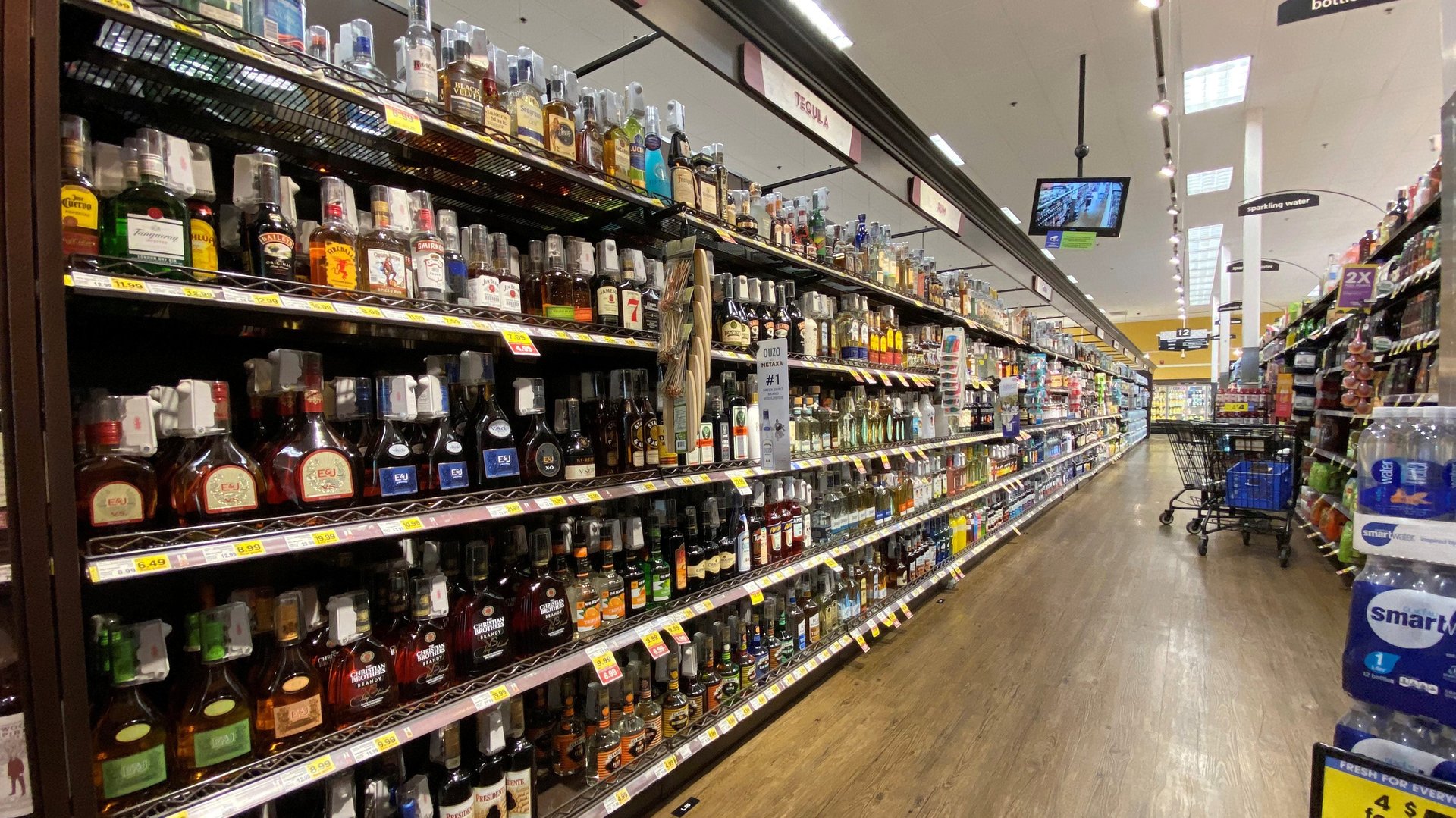Alcohol and air travel got cheaper in the US in October
US inflation rose by 6.2% in October compared to 2020, the highest annual increase in 31 years, according to the latest Consumer Price Index released by the Bureau of Labor Statistics today (Nov. 10). Price hikes for everyday items such as gas, beef, and rent helped drive the surge, along with used cars, because new vehicles are caught up in the supply chain crisis.


US inflation rose by 6.2% in October compared to 2020, the highest annual increase in 31 years, according to the latest Consumer Price Index released by the Bureau of Labor Statistics today (Nov. 10). Price hikes for everyday items such as gas, beef, and rent helped drive the surge, along with used cars, because new vehicles are caught up in the supply chain crisis.
But a few items were spared: The price of alcohol went down by 0.2%, while airline fares decreased by 0.7%.
Alcohol prices have risen at a slower rate than demand
Many Americans turned to alcohol when they were stuck at home during the initial months of the covid-19 pandemic, and in most states liquor stores stayed open throughout lockdowns because they were deemed essential. Retail sales of beer, wine, and liquor rose by 17% between February and March 2020 and have stayed historically high throughout the pandemic, according to a Federal Reserve of St. Louis (FRED) analysis.
But alcohol prices didn’t climb as quickly as consumer demand, even as the prices retailers had to pay for alcohol rose. While the relatively high demand for alcohol during the pandemic provided ideal conditions for sellers to engage in price gouging, this doesn’t seem to have occurred. The FRED analysis notes the high demand may have initially been seen as temporary, “so retailers may have been willing to forgo a large amount of quick profit to reinforce better long-term prospects with their regular customers.”
While the US consumer price index for alcoholic beverages remains much less volatile than demand, it has been climbing at a steady pace since March of this year, when a number of states started allowing bars and restaurants to lift pandemic-related restrictions. October was the first time since February the average price of alcohol dropped month-over-month.
Airlines see lower fares as well
The airline industry was one of the sectors hardest hit by the pandemic and has just started to recover as more countries, including the US, reopen their borders to international travelers. But even as airlines including American and Southwest posted profits last month, air fares declined.
The lower fares may be good news for Americans seeking affordable tickets, but not necessarily for the overall health of the industry. Air fares are one of the few indices covered in the Bureau of Labor Statistics report that saw inflation decline over the past year, with average prices dropping by 4.6% in October compared with 2020. This is still a marked improvement from October 2020, when borders were shut and fares were 20% lower than in 2019.